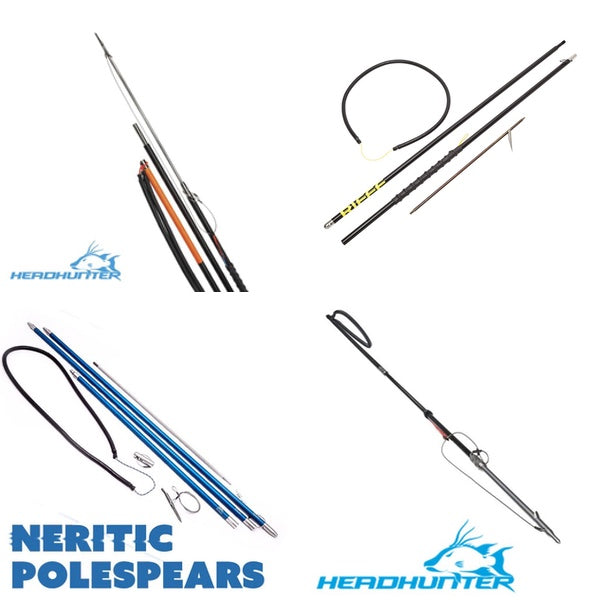
A Break Down Of Modern Pole Spears
Over the past decade there has been a greater use of pole spears. The creation of a separate division of world records by the International Underwater Spearfishing Association (IUSA) helped create appeal for the use of pole spears. Increased traveling to the Bahamas, where spearguns are prohibited but polespears and Hawaiian slings are allowed, has also helped to increase the popularity of the polespear. Besides those more straightforward considerations, polespear popularity may have just increased because of the successful marketing of the polespear as a more challenging and sporty way to harvest your fish.
History of Pole Spear Use
Pole spears have been around for ages, and odds are that they are what the first spearfishermen used in pre-history. Shaping a sharp stick to skewer fish isn't the most complicated of tasks, although modern ones are a bit more advanced. In the 20th century, if you wanted a pole spear you were mostly looking for a short, fiberglass, pole with a three prog tip. It was a good way to start out as a kid shooting small fish in shallow water, but it was difficult to land anything of size. Later, in the 90s and early 2000s, a few metal ones started showing. These were not much longer than the fiberglass spears, but could usually break down for easier travel. They also had more force and durability than the small fiberglass spears. It was the start of a new age.
IUSA World Records
If there is only one factor that pushed the advancement of these tools, it has to have been the IUSA creating a separate division for them. Up until this separation, all spearfishing world records were grouped together, regardless of how the fish was taken. Pole spears were starting to improve around the same time as this transition. Riffe was early in the creation of quality polespears. After the creation of the separate categories, there was a notable shift in the quality of pole spears being introduced to the world of spearfishing, for the better.
The Transition to Modern Pole Spears
There are several qualities of modern pole spears that differentiate them from the past. Probably the biggest difference has to be the the length of modern spears. A Pole spear's range is pretty much the length of the spear itself. You may be able to reach out slightly further when shooting smaller fish, but if you want to penetrate the fish you have to be pretty close to the target. That is why modern, high quality, pole spears are as long as they are. Most of them are eight or nine feet long. They also tend to be made out of either aluminum, composite, or carbon fiber. These three materials each have benefits and problems. With the improved technology, the cost of these tools has gone up, but are still much cheaper than spearguns.
Aluminum
Aluminum is one of the first materials to make quality pole spears. Aluminum is denser and heavier than fiberglass, and that extra weight makes them move a little slower once you release them, but it means they have more force when you hit the fish. The only issue you have with aluminum pole spears is that aluminum can corrode if you don’t take good care of it. You need to make sure you give everything a good fresh water rinse after every dive trip to keep it is good working condition. There are several manufacturers of aluminum pole spears including Riffe and Neritic. Because these break down for easy travel, you can easily adjust the length of the spear. You can use the three foot sections to make a 6 foot spear, or add another two or three foot section to make an eight or nine foot pole spear.
Composite
Composite pole spears are several levels above the classic fiberglass spears. Headhunter has revolutionized this type of pole spear. With improved durability, and solid construction they have made these spears capable of landing some truly gigantic fish. There have been tuna landed that are well over 200 pounds with the Headhunter Nomad. These are fast, and still manage to hit hard. The composite construction is extremely durable. This is essential when you are targeting large fish. Just like with aluminum spears, these these break down for easy travel, and you can easily adjust the length of the spear.
Carbon Fiber
Carbon Fiber is an amazing material that is getting used more and more in spearfishing. It is a very strong, very light material but the downside is that it is more brittle than aluminum and composite materials. It is very fast, but is not a dense as composite or aluminum. Because of this, they can have a little less power when it comes to penetrating fish. Riffe makes a great carbon fiber spear at a fair price. Because these break down for easy travel, you can easily adjust the length of it. You can use the three foot sections to make a 6 foot pole spear, or add another two or three foot section to make an eight or nine foot pole spear.
